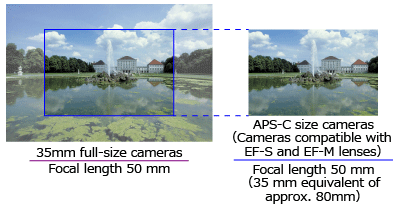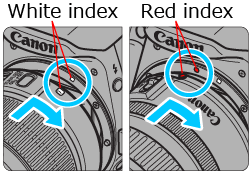What is an EF-S lens? (EOS REBEL T6i / EOS 750D)
| Article ID: ART161489 |
| |
Date published: 08/04/2015 |
| |
Date last updated: 09/18/2015 |
Description
What is an EF-S lens? (EOS REBEL T6i / EOS 750D)
Solution
| Solution |
Canon EF-S lenses are designed for use exclusively on cameras equipped with APS-C size image sensors.
As APS-C is more compact than 35mm full size, the optical system and mechanical structure of Canon EF-S lenses incorporate features to effectively provide optimized performance for camera models such as the EOS REBEL T6i / EOS 750D.
Using a Digital Single-Lens Reflex Camera or Interchangeable-Lens Compact System Camera with an APS-C image sensor, the replacement lens's 35 mm equivalent focal length is approximately 1.6 times greater, and the angle of view is more like that of a telephoto lens as a result. For example, if a 50 mm lens is attached to a camera with an APS-C size image sensor, the 35 mm equivalent focal length will be approximately 80 mm.

- When attaching EF-S lenses to the camera body, align them with the white, square mount index. EF lenses should be aligned with the red, round mount index.

NOTE
Features of EF-S Lenses
The following features make it possible for Canon EF-S Lenses to achieve optimized performance while maintaining compact and lightweight designs.
- The image circle (the round image area created by the light passing through the lens) has been reduced in line with the screen size of cameras compatible with EF-S lenses.
- To accommodate the smaller quick-return lens of the cameras, the back focus (the distance from the rear element of the lens and the sensor) is shortened further (short back focus) than that of the regular EF lenses.
REFERENCE
The mechanical configuration of EF-S lenses prevents them from being mounted on cameras that do not support their use. In addition, a protective rubber ring is attached to the back end of EF-S lenses to prevent possible damage resulting from accidental mounting on a non-compatible camera.
|
|
ID
:
8202597500
_
EN
_
1
|